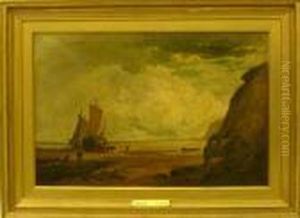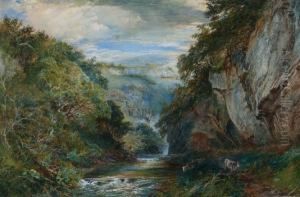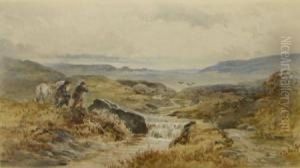Read Turner Paintings
Joseph Mallord William Turner, known as J. M. W. Turner, was born on April 23, 1775, in Covent Garden, London, England. The son of a barber and wig maker, Turner showed an early aptitude for drawing, and by the age of 13, he had begun to create detailed architectural sketches, which were already exhibiting signs of his later preoccupation with light and atmospheric effects. He entered the Royal Academy of Art schools in 1789, and his earliest works consist of watercolours and engravings. By 1790, he exhibited his first oil painting at the academy.
Turner quickly gained a reputation for his luminous and atmospheric landscapes and seascapes. He was a master of the Romantic style, and his works were characterized by dramatic and imaginative use of color and light with a preference for vivid landscapes. Throughout his career, Turner traveled extensively across Europe, particularly to Italy, where the light and landscape had a profound impact on his work. His travels informed his evolving style and led to the creation of some of his most famous works, which often featured shipwrecks, historical events, and natural phenomena.
Turner was also an academician, being admitted to the Royal Academy in 1802, and he taught perspective there. He was known to be eccentric and reclusive, and he never married, though he was rumored to have had relationships. Towards the end of his life, Turner's works became more abstract and impressionistic, foreshadowing developments in painting that would only come to full fruition with the advent of Impressionism later in the 19th century. His late works, such as 'Rain, Steam, and Speed - The Great Western Railway' and 'The Fighting Temeraire', are particularly noted for their visionary approach and innovative use of color and brushwork.
Turner passed away on December 19, 1851, in Chelsea, London. He left a large body of work, including over 550 oil paintings, 2,000 watercolors, and many thousands of drawings and sketches. His legacy is preserved at the Tate Britain, London, particularly in the Clore Gallery, which is dedicated to Turner's works. His bequest to the British nation was intended to establish a Turner Gallery, which became a long and complex saga due to the vagueness of his will and the poor condition of many of his paintings at the time of his death. Nonetheless, Turner is remembered as one of the greatest British painters, whose work continues to be celebrated for its brilliance and innovation.


